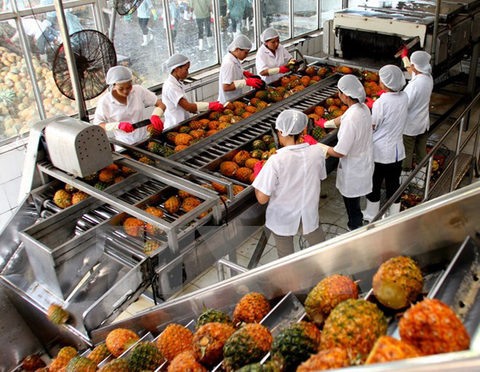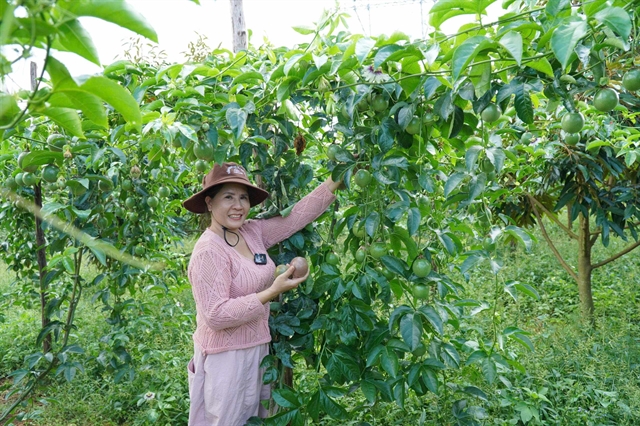 Economy
Economy

Even as local farmers contend with falling prices and struggle to sell their produce, the country is spending millions of dollars buying imported agricultural products.
 |
| Even as local farmers contend with falling prices and struggle to sell their produce, the country is spending millions of dollars buying imported agricultural products.– Photo cafef.vn |
HÀ NỘI – Even as local farmers contend with falling prices and struggle to sell their produce, the country is spending millions of dollars buying imported agricultural products.
This has raised the question of how to prevent Vietnamese agricultural products from losing out in the domestic market.
The Ministry of Agriculture and Rural Development’s recent statistics shows that Việt Nam imported US$852 million worth of vegetables and fruits in the first seven months of 2017, nearly double that of the same period last year. The import revenue is estimated to exceed $1 billion this year.
The vegetables and fruits were imported from Thailand, which holds 57 per cent of the market share in the first half of 2017, followed by China (16.8 per cent).
Việt Nam mainly imported apples, oranges, kiwis and cherries (from New Zealand and Australia), mangoes, custard apples, and tamarind (from Thailand), green apples (from France and the United States), pomegranates (from South Korea) and vegetables from China.
The nation also spends billions of dollars importing other agricultural products such as maize and soy bean every year.
A market research survey published on Vibiz.vn recently revealed that 53 per cent of Vietnamese citizens surveyed preferred buying rice from Thailand and Japan, which have gained huge popularity though Việt Nam is among the world’s top rice exporters.
Đào Anh Tuấn, director of a company that imports fruits in Hà Nội, said many kinds of fruits that can be grown in Viêt Nam are now imported, such as mangoes, grapes and coconuts.
As market opens up more and more, many fruits are being imported in huge quantities, which lowers their cost, Tuấn added. In addition, there are many players in the fruit import market and the competition is fierce, so the price of imported fruits has dropped, and some are even cheaper than locally grown fruits, Tuấn said.
Imported fruits are increasingly favoured by consumers who believe that they are of better quality, Tuấn said.
According to Đăng Kim Sơn, former director of Institute of Policy and Strategy for Agriculture and Rural Development, consumers choose products based on quality, safety and price.
Vietnamese producers must focus on improving quality, ensure hygiene and safety standards are met, and lower prices in order to compete effectively with imported products, he said.
It will also be tough for Vietnamese agricultural products to compete amid rapid international integration, if products continue to be exported in raw form and have inconsistent quality and unclear origins, Sơn said.
The decisive factor is product quality, said expert Võ Tòng Xuân, adding that products sold in the domestic market must be of the same quality as those exported.
Phạm S, deputy chairman of Lâm Đồng Province’s People’s Committee, said the management of agricultural production must be improved to ensure product quality and food hygiene and safety. — VNS




